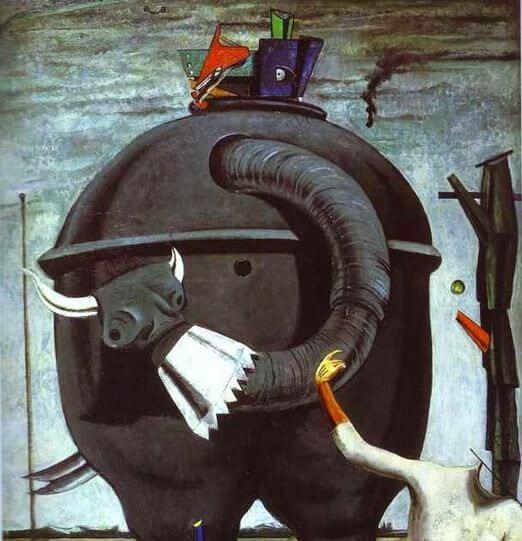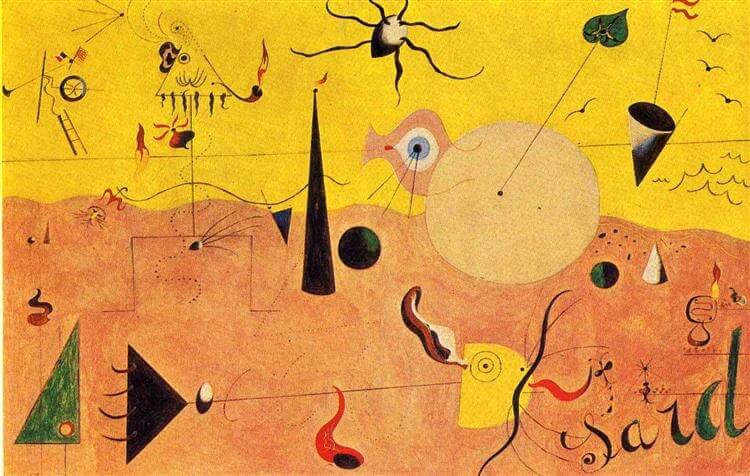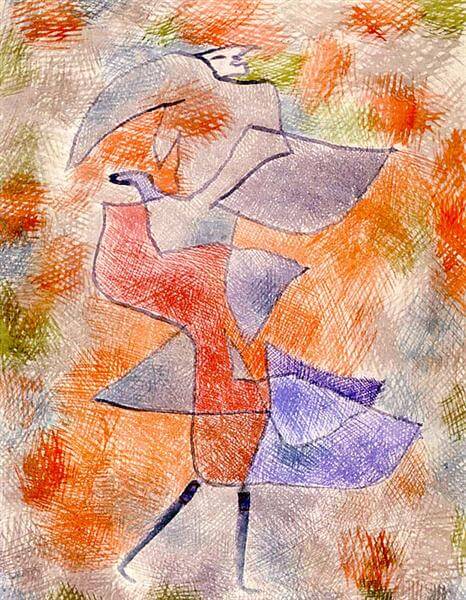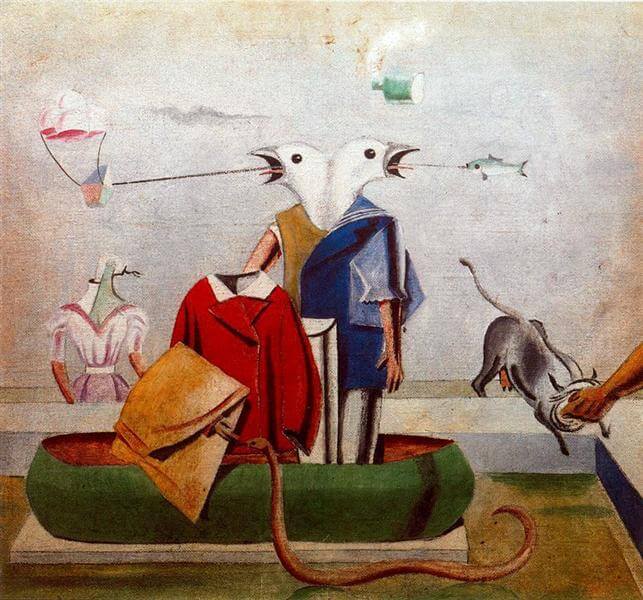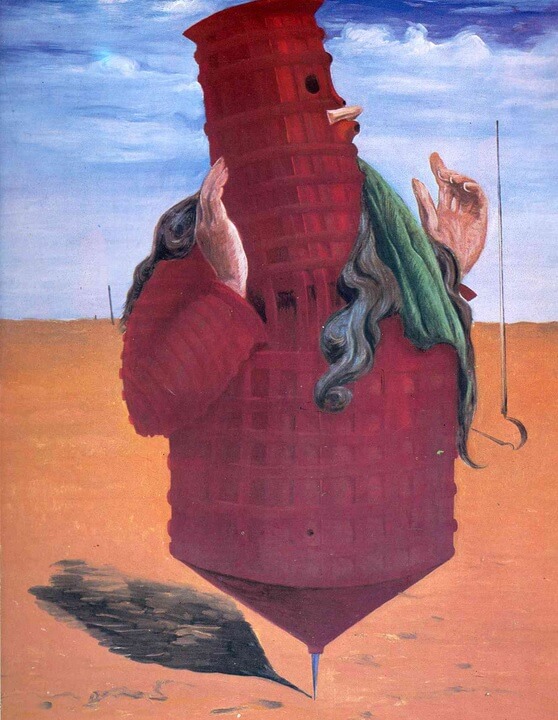Activity 1: Can You Find It?
Find the following in the artwork:
- Ubu
- Human Hands
- Tilted Tower
- Scythe
- Top Tip
- Shadow
- Top Tip
- Gray Hair
- Desert Sand
- Green Cloth
- Mustache
- Mouth
Activity 2: Narrate the Artwork
- After studying the artwork, narrate the scene shown aloud using your own words.
Activity 3: Map the Artwork
- Max Ernst was born in Germany. Find Germany on the map of Europe.
Activity 4: Classify the Artwork
- This artwork belongs to the surrealism art movement.
- Find surrealism on the timeline.
- During which approximate years did surrealism flourish?
- Which art movement followed surrealism?
Activity 5: Recreate/Color the Artwork

- Click the crayon above and complete page 35 of 'Fifth Grade Art History Coloring Book.'
